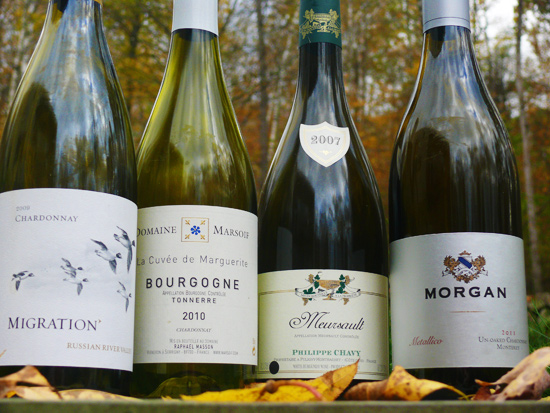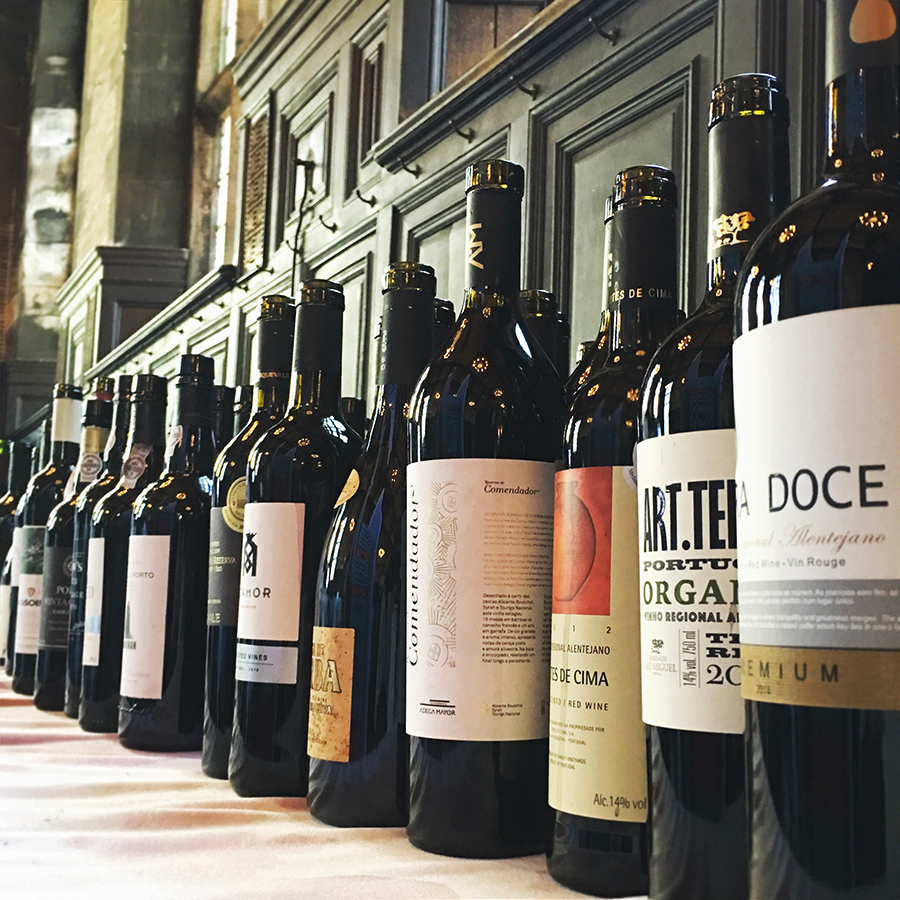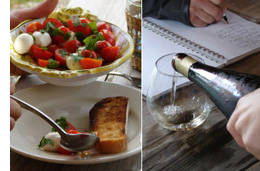“all things are generated in this way, opposites from opposites… Even if we do not in every case have the words to express it, yet in fact is it not always inevitable that there is a process of generation from each to the other?” 1
—Plato
Columbus Day got me thinking about the Old World and the New.
The Old World is Europe, Asia, Africa; it is France, Spain, Italy, Britain, Greece, Slovenia, Russia, Norway, China. It is soil and inheritance, stone and blood. Throughout its history, its crust has been scratched by war, emptied by famine and plague, refilled by renaissance and abundance, then emptied again by the exodus of tens of millions, free and forced.
Strife and bounty, growth and progress, diplomacy and fractured unions have, throughout Europe’s long history, engendered a rich cultural ferment. The Enlightenment’s masters gave us new frameworks, new ways of knowing. The Old World became the physical and metaphysical homeland of the Western canon. The reverberations still make us tremble.
The New World is the Americas and Oceania; it is Mexico, Canada, the United States, Argentina, Chile, New Zealand, Australia. It’s the lush plain onto which we spread from Africa or Asia, by strait or sea, tens of thousands of years ago. Those who arrived first thrived, contracted, thrived, contracted, in endless wheeling cycles, fanning out to the watery edges to meet, finally, the new arrivals in what became a torrent of tears. These original few were obliterated by disease, by resource deprivation, by depravity and ignorance, by the stories that were not their own and could not become their own, by languages that snuffed their traditions.
The shores were continually washed by waves of immigrants who came, hauling their history and traditions, transforming them into brand new narratives. These stories admixed. If the Old World is the homeland of Western tradition, the New World is the homeland of its reinvention, but always posed in contrast to, in answer to, the Old.
For those of us who think about wine a lot—drink it, share it, make it, write about it—the Old World is the place where wine was born. It is wine’s origin. The New World, meanwhile, is the place to which wine spread. It is wine’s insertion.
As wine writers, we have adopted this narrative of old versus new, original versus remade. We think of Old World wines as the ur-wines, those after which all other wines are fashioned. We have developed a vocabulary for them; they’re natural, neutral, un-manipulated, non-interventionist, elegant. They’re artisanal, hand-crafted, savory, with good minerality. They’re wines of terroir, made in the vineyard. They’re authentic and noble and pure.
There’s a mirror narrative for New World wines, with its own parallel vocabulary. They’re juicy, jammy, fleshy, plush, oaky, buttery, toasty. They’re fun and fruit-forward, great by the glass. They’re consistent and reliable, or tricked-up, palate-pleasing, and point-score chasing. They’re absolutely made in the winery.
These narratives are a gloss, a useful shorthand, but they are false. The Old World/New World lexicon valorizes Europe while casting subtle (and not so subtle) aspersions on wine made elsewhere, and also skirts the difficulty of identifying any given wine’s true focus. Reality is messy, and taste is ineffable, but we must find ways to describe what we genuinely experience, not just what we expect to experience based on prejudgment. As writers, we can do better than this.
Let’s unpack the terms. When we call a wine Old World (whether or not it’s made in Europe), I think we mean that vineyard management is a significant factor in the equation. That the winemaker is a farmer, responsive to vintage conditions. That the wine is only grapes, plus yeast and maybe sulfur. That for the most part, the human role is to let the fruit and yeast do the work, step in as a shepherd, and bottle a product that will serve as part of a meal.
When we say a wine is New World, I think we mean wines that are more about personality than place. The winemaker aims for a particular stylistic effect, rather than simply submitting to the vintage, and might also strive for consistency year to year. The fruit is likely Vitis vinifera, European grapes, but an American winemaker will know her varietal Pinot Noir won’t taste much like Gevrey-Chambertin. On the other hand, she’s also not bound by the same restrictions as that vigneron in Burgundy. He’s tied by both tradition and law. She can tinker if she wants to.
Tinkering alone, though, doesn’t guarantee her wine will taste tricked-up, jammy, and fat. It might indeed share many stylistic elements with a red Burgundy. But these two winemakers are working in different ways. He’s more like a farmer, and she’s more like a chef. Both might make a fine and palatable product, but the aesthetic intentions underlying the efforts are quite different, as are their processes.
The bottom line is that it’s no longer possible to tie any given stylistic expression to a location, a place, which the Old World/New World narrative presupposes. Any particular finished wine these days embodies the marriage of individual expression, traditional sensibility, terroir and vintage, market expectation, and a host of other factors.
The four wines below are a case in point. I tasted them all one recent evening, with food, at a gathering of friends. It was a trip around the world, and around the styles, too.
The Duckhorn “Migration” Chardonnay 2009, from the Russian River Valley, 14.1% alcohol by volume, is languid and unctuous. It perfectly fits that generous, buttery, profile we might expect from California Chardonnay. The Morgan “Metallico” Chardonnay 2011, from Monterey in California’s Central Coast, is likewise a big mouthful of bright chardonnay fruit, and likewise 14.1% alcohol. But it’s also quite savory, and presents itself to the palate without a trace of oak or butter. There’s clearly something different happening in these two cool-climate California whites, and while they’re not the same vintage, I suspect the differences derive primarily from the winemaker’s stylistic choices, his or her intent.
Meanwhile, the Domaine Marsoif Bourgogne “La Cuvée de Marguerite” 2010 might fit one’s standard definition of Old-World Chardonnay. It’s lean and steely, with subtle floral notes, an herbaceous savoriness, and bracing acidity. It’s also well balanced, and at 12.5% alcohol, is a good partner for food: it stays refreshing, and the diner stays alert. It’s not a commanding wine, but I get the sense that it’s not meant to be. It’s meant to be placed on a table, and served as part of a meal.
And last the Philippe Chavy Meursault 2007. A moderate 13% alcohol, this wine is a vivid, electric yellow, yielding earthy, oily aromas of citrus and herbs. Lush and smooth on the palate, it delivers a cool, steely gleam that’s polished by oak. The wine feels broad, integrated, and beautifully balanced. Lively and interesting, it’s also terrific with food. It’s a good denouement for the quartet, one that draws together all the stylistic strands we’ve discussed—oak, butter, minerals, toast, earth, fruit, steel. Yes, it was made in France, but none could say rightly whether it’s more Old World or New.
So how shall we proceed? Some might consider terms like “traditional” and “modern.” The proposition here is that hundreds of years ago, winemakers had fewer options for manipulating their vines, must, ferments, and finished wine, and this way of working set the prototype for the kind of wine we’d like to identify as old school.
But let’s face it, our forebears used whatever technologies were available (and devised plenty of new ones) to save labor, stabilize the product, and keep the wolf from the door. And nowadays, sure, you can make wine with your bare hands—but it helps to have a truck and a forklift. Modernity is about the flexibility to make choices, and depending on whose scholarship you esteem, Modernism began as early as the late fifteenth century. Wine has been modern for a very long time.
Mark Bittman recently coined the new term “foodness” to indicate the degree of naturalness or authenticity of a particular food, the extent to which it reflects its origins as an agricultural product. In his schema, a piece of fruit would have a high foodness score, while a piece of fruit-flavored candy rates low. We might relatedly consider “wineness” as an indicator of how closely a wine resembles its origin as grapes-plus-microorganisms. But still, a plush wine might be made only of grapes and yeast, but reflect really different sensibilities depending on how those two ingredients were grown and handled.
“Food wine” is perhaps closer to the heart of it, as it suggests wine as an agricultural product, wine as food, and wine as a companion to food. But that notion still seems one-dimensional at best, and skips over the making in favor of simply describing the end result. We need somehow to consider the spectrum of factors contributing to a wine’s character: its food-friendliness, its freshness and acidity, the winemaker’s intentions and stylistic aims, the grapes’ provenance, the region’s history. In short: the wine’s context.
There are no easy terms for this idea we’re chasing. Wine is multivariate. The Old/New dialectic is a false dichotomy. The Old World is not all natural. The New World is not all new. Wine—like culture, like language—results from an admixture of traditions, intentions, and soils. It is more than the sum of our myths about it. Perhaps the only essential truth about wine is that we need to find new ways to talk about it, in words that are wholly and thoughtfully our own.
Many thanks to Eric Asimov, Wine Business, and Wine Industry Insight for recommending this article to their readers.
1 Plato, Phaedo [71a–71b]; Plato in Twelve Volumes, Vol. 1 translated by Harold North Fowler; Introduction by W.R.M. Lamb. Cambridge, MA, Harvard University Press; London, William Heinemann Ltd. 1966.





This gets my instant nomination for Best Post on a Wine Blog for the awards next year. Very thoughtful; beautifully written.
Fredric, thank you. That’s high praise from a writer whose work I greatly esteem.
Great post! I particularly like that it raises questions rather than pontificates on answers.
Thanks, Ilona. I like to explore ideas and stimulate discussion. If there were an easy answer to these questions, this wouldn’t be much of an article.
What a great read this was, first thing this morning. This is precisely the kind of wine article that I like because it explores the product itself to a certain degree, but goes more deeply to our perceptions of and relationships to wine. This is the kind of writing that gives a mere tasting note far more meaning than when they stand alone.
The only issue I take with this article, is that after having read it at the start of my day, I will have to wait until later to sit with a vino di meditazione, and the thoughts it has provoked.
Meg,
This a great post. As often happens, folks try to understand a thing by putting it in context with what they already know. The American market tends to be dominated by commercially-styled, domestic wines with little “wineness.” As such the New World moniker seems apropos for ripe, fleshy and fruit driven wines.
I once had a wonderful tasting of technically dealcoholized wines that had the same base stock (California Syrah) and tasted like they came from different terroirs/climates; including some with the “herbaceous savoriness” you mention in re: to the Bourgogne Blanc above. You can see a little about the process here: http://www.vinovation.com/alcadjustment.htm
Todd, thanks so much for your kind comments. I’m happy to provide reading material to bookend your day, any day.
Andrew, I envy your opportunity to taste a range of dealcoholized wines. I’d love to try this experiment, especially with wines made in a riper style. I’m not an enologist, but it seems intuitive that once a wine’s alcohol goes above, say, 13.5%, the winemaker must amp other elements in the wine, too, to produce a balanced net result. Maybe stripping out the alcohol in wine is analogous to stripping out the salt in bread: you’d surely taste what the raw materials are made of.
Excellent and profound post! Unfortunately, many people still labour under assumptions and stereotypes like “New World wines don’t have any terroir”, and other such nonsense.
Beautifully written, well said.
Thank You.
Fabio and Sasha, many thanks for reading, and for your kind remarks.
Meg,
I knew this piece would speak to me at a core level, and you’ve struck it home. Wonderful and lovely writing, as always, and a topic that I couldn’t be more enthusiastic about. Wine’s context is crucial to exploring and understanding what it is, and what it means to us individually. Thank you for giving further voice to this.
I like the way you bring out the complexity of the topic.
Personally, I buy into the old world / new world paradigm because it feels right most of the time. There may be asymmetry in that old world locations can also produce new world wines, but new world locations cannot produce old world wines. I believe that, fwiw. Something of the ineffable influence of history makes a difference. You can’t make Merseault in Sonoma any more than Kraft can make Parmigiano Reggiano in Wisconsin. But they could make that white cheese powder in Parma if they wanted to.
Bravo! I could not agree more that we writers can do better in describing TODAY’s global wine scene. When wine writers rely on generic assumptions and old descriptors, wine lovers who read about wine are not getting the true picture of what the world of winemaking looks like these days,
My main interest is the global wine market, so on my tours I pay close attention to this subject in the vineyards and in the cellar. Even in Germany I have met winemakers who are stepping out of the old style. A two-person outfit, their reasoning is not to pander to the export market but rather they want to express their preferred style. I personally like the breaking down of these traditions and I think the trend will continue. Although it’s considered blasphemous in certain circles, I’m thrilled that bottles are being sent to the US from Germany that say “Pinot Noir” instead of Spätburgunder. It will make it a lot easier for wine lovers to discover their excellent Pinot Noir. (By the way, many producers age their Pinot Noir for 15+ years before releasing, which is very German isn’t it?)
The term I use for South Africa and Argentina is “re-emerging” markets. I believe their wines today have been influenced by both new and old world techniques. Although it’s tradition, it’s worth thinking about whether these are helpful descriptors. The end of Apartheid has significantly impacted the wine industry in South Africa, whereas Argentina has a lengthy tradition of winemaking that is just now “re-emerging”. I would have to write an article to fully explain my theory but thanks for the opportunity to comment in a nutshell.
As always Meg, your writing is stupendous.
Very good post indeed! Really enjoyed it.